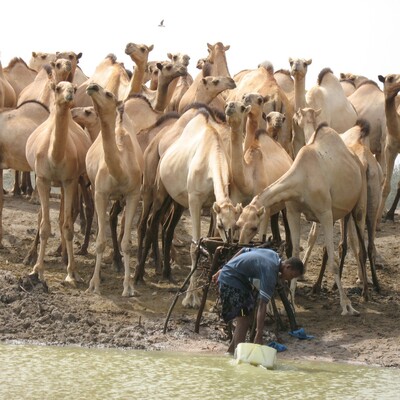
The effect of supplementation with Leucaena leucocephala and maize bran on voluntary food intake, digestibility, live weight and milk yield of Bos indicus X Bos taurus dairy cows and rumen fermentation in steers offered Pennisetum purpureum ad libitum in
Abstract
An experiment was carried out to evaluate dairy performance and rumen fermentation from a forage-based diet supplemented with Leucaena leucocephala (leucaena) and maize bran. Bos indicus (Ayrshire/Brown Swiss) X Bos taurus (Sahiwal) cattle were offered Pennisetum purpureum (napier grass) ad libitum either unsupplemented (N) or supplemented on a dry-matter (DM) basis with 1 kg (LL) or 2 kg leucaena (LH) or 2 kg leucaena together with 1 kg DM maize bran (LHM). Food intake, milk yield, diet apparent digestibility and nitrogen balance were measured using eight cows (mean live weight 384 (s.d.41) kg in two 4 X 4 Latin squares. Rumen fermentation was measured using four rumen fistulated steers (mean live weight 352 (s.d.12) kg in a 4 X 4 Latin squares. Performance was recorded during the last 7 days of each 21-day experimental period. Supplementation increased food intake (6.3, 7.6, 8.7 kg DM per day; P<0.01; s.e.d. 0.24) and milk yield (5.1, 5.4, 5.5 and 6.5 kg/day; P<0.01; s.e.d. 0.28) for N, LL, LH and LHM respectively. Supplementated diets tended to be more digestible compared with napier grass as the sole food (organic matter apparent digestibility coefficients 0.54, 0.55, 0.57 and 0.57; s.e.d. 0.020; N, LL, LH and LHM, respectively) and N balance increased progressively with supplementation. Supplementation progressively increased rumen ammonia-nitrogen concentrations in steers and the rate of rumen degradation of napier grass increased when leucaena (diets LL and LH) was offered. The results suggest that supplementation of napier grass with leucaena increased DM intake owing to increased ammonia concentrations and rates of napier degradation in the rumen. Supplementation of the forage diet with 1 kg DM maize bran did not significantly reduce the rumen degradation of napier grass and increased the molar proportions of propionate which may have increased the efficiency of utilization of metabolizable energy and therefore milk production.
Citation
Animal Science;60 (pt.1): 13-23










